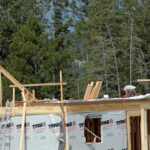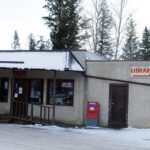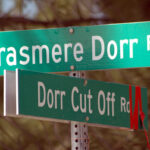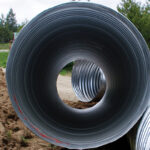Home »
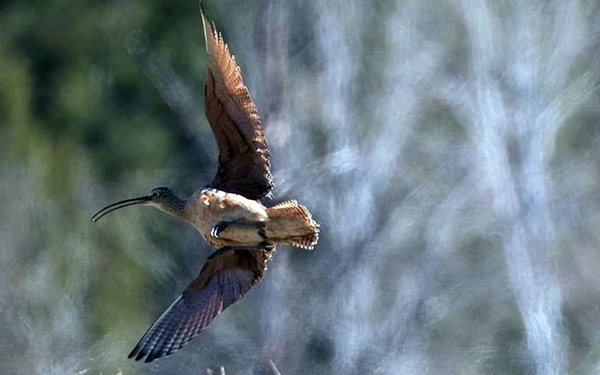
With care the Curlews can keep dancing
Op-Ed Commentary
The wave is heading north! While the Canada-US border may be closed to non-essential human travel, wildlife still moves freely back and forth.
Bird migration is one of the rites of spring. An ecological marvel as millions of birds head north to the Kootenays and beyond from wintering grounds as close as the American midwest to as far away as Argentina. Almost daily, new species arrive from waterfowl to raptors to shorebirds to songbirds. For those of us keen to follow their movements, the arrival of species is like the return of an old friend.
In these days of isolation and solitude, watching the natural world unfold as it always does is a reassuring solace. One of the recent arrivals is Long-billed Curlew or kt̓anuqⱡuk in Ktunaxa (k-tan-ook-thook). Locally, we know Long-billed Curlews as a grassland bird, for here in the East Kootenay they are found on open short-grass prairies.
But curlews are technically shorebirds. Members of the sandpiper family, they are the largest shorebird in North America. Their eponymous, almost comical, down-curved bill is primarily adapted for probing into shoreline mudflats to extract unwitting worms, crustaceans and other tasty morsels. Only in breeding season do they abandon their shoreline habitats for dry, upland flats of western North American prairie.
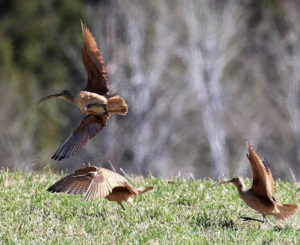 Here on the nesting grounds, crickets, grasshoppers and other insects form the bulk of their diet as they raise their young. They typically arrive in mid- to late-April and start to set up nesting territories. Males have elaborate and noisy courtship displays of acrobatic flying. It’s a bit of a ruckus on the prairie.
Here on the nesting grounds, crickets, grasshoppers and other insects form the bulk of their diet as they raise their young. They typically arrive in mid- to late-April and start to set up nesting territories. Males have elaborate and noisy courtship displays of acrobatic flying. It’s a bit of a ruckus on the prairie.
Nests are made on the ground, young hatched and reared, all usually by mid-July. Research has found the adult females migrate south around the same time, about two weeks ahead of males and the young.
David Bradley, a biologist with Birds Canada, recently conducted that research on Skookumchuck Prairie here in the East Kootenay, fixing GPS radio transmitters to several birds. He found curlews that nested, on average, three km apart on the East Kootenay’s Skook Prairie, migrated south through western Idaho and eastern Oregon then spread out on wintering grounds from California’s northern Central Valley to the Imperial Valley on the Mexico border. Their average distance apart in winter – over 300 km apart.
This past week, April 21 marked World Curlew Day (I’m sure you marked the occasion). There are just six species of curlew worldwide, plus two more that have recently gone extinct, including the Eskimo Curlew here in Canada. Three of the six species are endangered and our own Long-billed Curlew is listed as a species of Special Concern in Canada and blue-listed in British Columbia. This means that while they may not face the threat of imminent extinction, they do face challenges.
In Canada, Long-billed Curlews have declined in number by some 36% from 1970, according to Breeding Bird Survey data. Their grassland habitat is among the most threatened in the country with curlew breeding habitat facing challenges from croplands and urban development. Evidence suggests they are doing better in British Columbia, even expanding their range. This isn’t an indication of increased population though. Animals that expand into new areas often suffer higher mortality rates in these new areas until they become better established.
The future for curlews remains uncertain.
As noted, grasslands are ecosystems that face several challenges. Here in the East Kootenay, fire suppression has led to ingrowth and encroachment from surrounding forests greatly reducing their area. Invasive plants like cheatgrass and sulphur cinquefoil outcompete native bunchgrasses and other forbs (herbaceous flowering plants) that help maintain a healthy grassland community.
With care, we can ensure kt̓anuqⱡuk continues to dance in the air above our grasslands for years to come, heralding spring with their noisy arrival in mid-April to start the season anew.
Above images: Long-billed Curlews near Newgate. Photo courtesy Petra Ambrose
– Ian Adams is a wildlife biologist living near Cranbrook. He has never been known to dance on the prairie.

